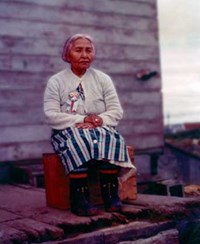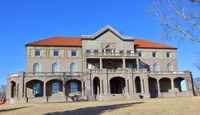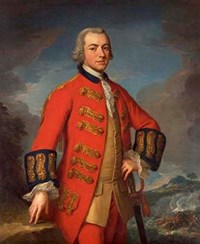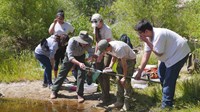- Lewis & Clark National Historic Trail (969)
- Lewis and Clark National Historical Park (94)
- Lake Clark National Park & Preserve (54)
- Juan Bautista de Anza National Historic Trail (39)
- Golden Gate National Recreation Area (32)
- Fort Vancouver National Historic Site (27)
- Fort Raleigh National Historic Site (26)
- Missouri National Recreational River (25)
- Nez Perce National Historical Park (24)
- Show More ...
- Geologic Resources Division (11)
- Regions 3, 4, and 5 (10)
- National Historic Landmarks Program (9)
- North Coast and Cascades Inventory & Monitoring Network (9)
- Inventory and Monitoring Division (6)
- National Trails Office - Regions 6, 7, 8 (5)
- Archeology Program (4)
- Natural Resource Stewardship and Science Directorate (4)
- Arctic Inventory & Monitoring Network (3)
- Show More ...
Showing 1,596 results for Lewis and Clark Expedition ...
Jenny Lake Plaza
- Type: Place

Dive deeper into the history of Grand Teton National Park. Interpretive signs introduce topics like the Greater Yellowstone Ecosystem, grizzly bear research, geologic forces and features, glaciers, and the Hayden Survey. A large bronze tactile relief map will help orient you in relation to where you are in the park. Different peaks, canyons, lakes, falls, and other park features are labeled throughout the map.
New life for interpretive signage
AmeriCorps VISTA Volunteers 2021
Pelagia Melgenak
- Type: Person

To learn the story of Pelagia (also spelled Palakia) Melgenak is to learn the sanctity of shared traditions, the loving bonds of kinship and the reverence of a spiritual connection to the land around you. Born in the late 1870s in the remote village of Savonoski in Alaska, Pelagia grew up learning about hunting, gathering, navigating and guiding in the area. That all changed in 1912 with the hot ash falling like a blanket covering the region with the eruption of Novarupta.
The Pecos Pueblo
Pioneer Register
- Type: Person

Charles Cornwallis, 1st Marquess Cornwallis and 2nd Earl Cornwallis, served as a British general during the American Revolution and notably surrendered his army to General Washington's Continental army and the allied French forces at Yorktown, Virginia in October 1781. This surrender effectively ended hostilities between British and American forces and led to peace negotiations, ending the war and recognizing American independence. Cornwallis later governed in India.
Mead Museum
- Type: Place

The Mead Cultural Education Center, located in Yankton, South Dakota, was constructed in 1909 by Dr. Leonard C. Mead. Originally serving as part of the women’s ward for the Dakota Hospital for the Insane, the building was in use until the 1980s. Today, however, it houses the Dakota Territorial Museum and is upkept by the Yankton County Historical Society.
- Type: Article

When the howling started in predawn darkness, natural sound recordist Jacob Job signaled to his research assistant to stop. Wolves. Cold and crouched in snow in the remote backcountry of the park with microphones and recording gear to the ready, the Colorado State University (CSU) scientists waited and listened. Silence. Then … the stealthy sound of crunching footsteps approaching.
- Type: Person

Benjamin Lincoln, a major general of the Continental Army, was present at pivotal moments in the American Revolution. He oversaw the Continental Army's largest defeat when he surrendered 5,000 soldiers to the British in Charleston, South Carolina in May 1780. After being exchanged, he returned to the army and was present at the allied Franco-American victory at the Siege of Yorktown. He accepted the surrender of General Charles O'Hara's sword.
- Type: Person

General Sir Henry Clinton, the longest serving British general of the American Revolution, served as commander in chief from 1778 to 1782. In the years after the Revolution, Clinton defended his actions in writing and felt unfairly labeled as the scapegoat for British defeat. He died in London in 1795 before he was able to assume the post of governor of Gibraltar.













